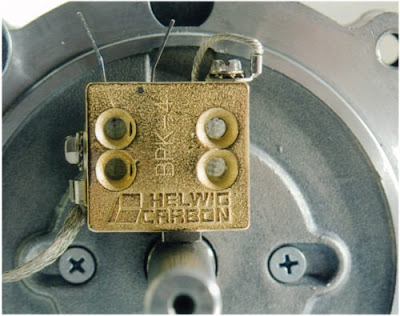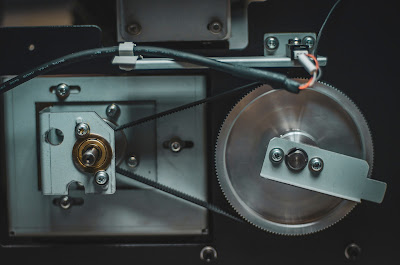How to avoid roller bearing failures
Roller bearings have become an essential component of modern machinery, keeping it running smoothly and reliably. However, despite their crucial role, roller bearings are also prone to failures which can result in costly downtimes and safety hazards. As such, it is essential to understand how to avoid roller bearing failure and take proactive measures to prevent it from occurring. In this blog post, we’ll delve into the various causes of roller bearing failure and provide practical tips on how to avoid them.
One of the primary causes of roller bearing failure is inadequate lubrication. Without proper lubrication, the rollers and races within the bearing are subject to increased friction, heat, and wear, which can lead to failure. However, over-lubrication can also be detrimental, by causing the formation of oil and grease pockets, which can result in overheating and subsequent damage to the bearing.
1. Choose the correct bearing type and size for your application.
Choosing the correct bearing type and size is a critical step in avoiding potential roller bearing failures. It is important to consider the load type, speed, temperature, and other environmental conditions in which the bearing will operate. Inappropriate selection of bearings will lead to premature wear and eventual bearing failure. To avoid these issues, it is recommended to consult with the manufacturer or a bearing specialist to determine the appropriate bearing type and size for your specific application. It is also crucial to regularly inspect, monitor, and maintain your roller bearings to ensure they remain in working condition and avoid unexpected failures. Choosing the correct bearing type and size and following regular maintenance procedures will not only increase the lifespan of the bearing but also improve the overall performance of the machinery in which they are installed.
2. Ensure proper installation by following manufacturer guidelines.
When it comes to avoiding roller bearing failures, proper installation is key. One of the most critical steps in ensuring a successful installation is to carefully follow the manufacturer guidelines. These guidelines provide a step-by-step process for installing the bearing correctly, ensuring that it is aligned and seated properly. Skipping any of the steps outlined in the instructions or taking shortcuts during the installation process can result in premature wear or even catastrophic failure. Therefore, it is essential to take the time to review and understand the manufacturer guidelines before attempting to install a roller bearing. By doing so, you can help to ensure that the bearing is installed correctly and increase its longevity and reliability.
3. Regularly inspect bearings for any signs of wear or damage.
Regularly inspecting bearings for any signs of wear or damage is a crucial step in maintaining roller bearings and preventing failures. Bearings are an essential component in many mechanical applications, and proper maintenance is key to ensuring their longevity and effectiveness. When inspecting bearings, it is important to look for any signs of wear, corrosion, or damage, including cracks or chips in the bearing surfaces. Additionally, listen for any abnormal sounds or vibrations that may indicate an issue with the bearings. Regular inspections and maintenance can help to identify and address any potential problems before they lead to bearing failure, ensuring that your machinery continues to operate safely and efficiently. By following these best practices, you can minimize downtime, reduce maintenance costs, and extend the life of your roller bearings.
4. Keep bearings properly lubricated and clean.
One of the main causes of roller bearing failures is inadequate lubrication. It is essential to keep bearings properly lubricated and clean to ensure their longevity and effective functioning. Neglecting this critical maintenance process can result in unwanted heat and friction, leading to premature wear and tear, which consequently causes the bearing to fail. Ensuring that the lubrication is correctly done can be achieved by following the manufacturer's guidelines, oil viscosity requirements, and applying only the recommended lubricants. In addition, regular cleaning removes debris and contaminants from the bearing, which significantly reduces the chances of premature failure. Proper lubrication and cleaning can extend the service life of your roller bearing, saving you time, money, and unnecessary stress.
5. Monitor operating conditions and make necessary adjustments to avoid overloading or overheating.
To avoid roller bearing failures, it is important to keep a close eye on the operating conditions of the bearing. One crucial step is to monitor the operating conditions and make necessary adjustments to avoid overloading or overheating. Overloading can cause excessive wear, while overheating can lead to damage or failure of the bearing. To ensure the bearing is operating at the optimum temperature and load capacity, regular inspections and maintenance should be carried out. Additionally, it is important to use the correct lubrication and ensure a proper and consistent supply is maintained. These practices, along with monitoring the operating conditions and making necessary adjustments, can help extend the life of the roller bearing and prevent costly breakdowns.
To sum up, avoiding roller bearing failures in machinery and equipment requires proper design, installation, operation, and maintenance. Ensuring that the correct bearing type and specifications are used, proper lubrication and contamination control practices are in place, and regular inspections and monitoring of bearing conditions can help prevent premature failures. Following these best practices can help improve equipment reliability, extend bearing life, and avoid costly downtime and repairs. It's essential to prioritize bearing maintenance to keep your equipment running smoothly and avoid unwanted and unexpected failure.




Megjegyzések
Megjegyzés küldése